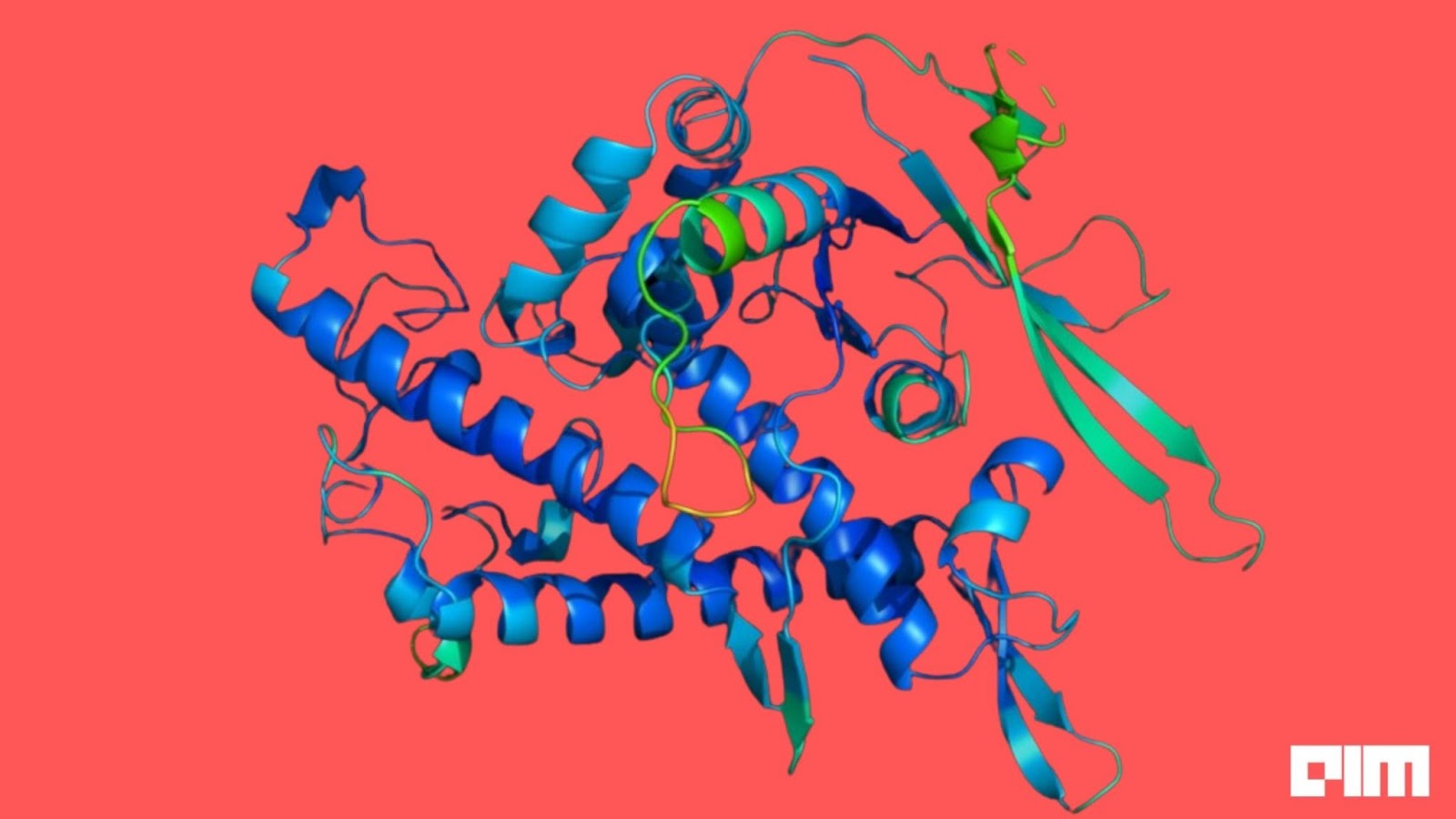
Life sciences have undergone a radical change as a result of AI-powered protein model prediction. In 2022, protein folding models with Google DeepMind’s AlphaFold paper being the most-cited paper of the year.
It has been two years since the London-based subsidiary of Alphabet, Google DeepMind, delivered the revolutionary answer to the decades-long ‘protein-folding problem’ in the history of AI research with AlphaFold. The open-source AlphaFold can accurately predict 3D models of protein structures from 1D amino acid sequences, which is accelerating scientific research in every field of biology and life science. Since then, the framework has been used extensively to find its real-life use cases, including the prediction of protein structures of the COVID-19 outbreak—SARS-CoV-2.
Let’s take a look at some of the interesting practical applications of AlphaFold.
Read more: The Man Behind One of The Most Important AI Advancements, AlphaFold
Advancing Malaria Vaccine Development
Biochemist and professor of molecular biology at the University of Oxford Matthew Higgins are advancing malaria vaccine development using AlphaFold. The vaccine targets multiple infection stages for comprehensive protection. They struggled to understand the critical protein Pfs48/45’s structure until AlphaFold’s integration. Combining its predictions with traditional methods clarified the protein’s workings, aiding vaccine design. Higgins acknowledges AlphaFold’s occasional inaccuracies but emphasises its collaboration with other techniques. With a clear Pfs48/45 structure, they’re entering human trials. Higgins envisions AlphaFold’s role in de novo protein design, enhancing vaccine development. This AI-tool integration shifts their project from fundamental science to clinical stages, offering potential for an effective malaria vaccine.
Delivering Gene Therapy
Scientists have made a remarkable breakthrough by tapping into the extraordinary abilities of a bacterium called Photorhabdus asymbiotica, which resides within the gut of a caterpillar, adapting it to inject proteins into human cells. This breakthrough holds potential for delivering therapeutic proteins, including those for gene editing. By modifying the syringe’s tail fibers using AlphaFold, scientists achieved successful attachment to human cells, leading to precise protein delivery. They tailored the injectors to bind with cancer cells, triggering their destruction while sparing others. Researchers harnessed AlphaFold AI to modify nanosyringes with tail fibers targeting cancer cells, precisely eliminating them while sparing others. A tagging technique allowed loading toxins and gene-editing enzyme Cas9 onto syringes, triggering cell death or gene editing when introduced to human cells. The adaptable method demonstrates potential for diverse protein loading and increased dosage. Further, AlphaFold aided modifying syringes to attach to mouse cells, successfully introducing glowing proteins into neurons. While in early stages, researchers aim to optimiSe delivery efficiency and explore DNA/RNA payloads. This study showcases AlphaFold’s role in tailoring syringes for targeted gene therapy.
Drug for Liver Cancer
A team of researchers consisting led by the University of Toronto’s Acceleration Consortium director Alán Aspuru-Guzik, Chemistry Nobel laureate Michael Levitt, and Insilico Medicine founder and CEO Alex Zhavoronkov used AlphaFold to revolutionise drug discovery for hepatocellular carcinoma (HCC), the primary liver cancer type. This pioneering research employed the New York-based biotechnology company Insilico Medicine’s automated drug designing platform Pharma.AI. Using AlphaFold-derived protein structures, they rapidly designed potent inhibitors for a new HCC treatment pathway, achieving this milestone in just 30 days and seven synthesised compounds. This hints at a new era of AI-driven therapeutics poised to reshape healthcare and address critical medical needs.
Targeting Antibiotic Resistance
Scientists Marcelo Sousa and Megan Mitchell from the University of Colorado Boulder are using AlphaFold in countering this by targeting the antibiotic resistance mechanism itself. Conventional methods struggle to understand enzyme structures responsible for resistance. AlphaFold’s rapid and accurate protein structure predictions have unlocked a decade’s worth of data in minutes. Insights into these structures could pave the way to blocking resistance, and preserving antibiotic effectiveness. Marcelo Sousa and Megan Mitchell emphasize AlphaFold’s potential in tackling antibiotic-resistant infections.
Combating Neglected Diseases
DeepMind has collaborated with the nonprofit Drugs for Neglected Diseases initiative (DNDi) to tackle deadly neglected diseases in developing countries like Chagas disease, sleeping sickness and Leishmaniasis. It has already had considerable success in finding new treatments for sleeping sickness. Most notably, it has replaced melarsoprol – a toxic compound which killed one in 20 patients – with the safe drug fexinidazole, as the new standard of care for the disease.
Read more: Protein Wars Part 2: It’s OmegaFold vs AlphaFold
The post Top 5 Use Cases of AlphaFold in Life Sciences appeared first on Analytics India Magazine.